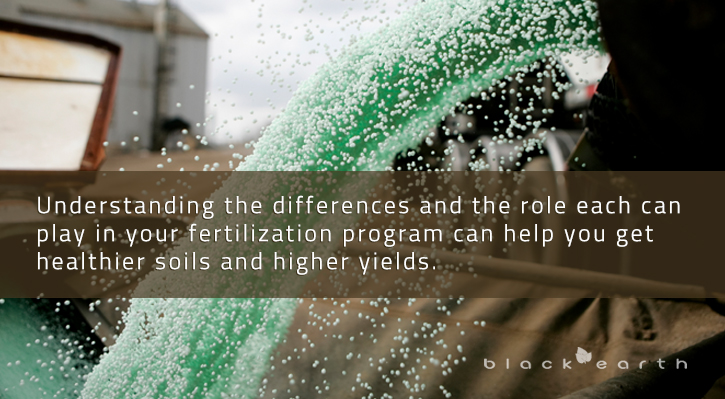What are the differences and how do they work together?
To begin we need to first understand the difference between humalite and leonardite. Both are referred to as ‘Humate’ products, and both comprised of similar materials. They are great sources of humic and fulvic acid, but per volume Humalite holds more of the active ingredients (Humic and Fulvic Acids), less of the undesirables such as ash and heavy metals, and is more easily extracted.

The Differences Between Leonardite and Humalite
Leonardite ranges considerably in humic and fulvic acid content. For example, deposits can have as low as 10% humic acid content and as high as 78%. It’s derived from Lignite based coal and was formed in salt water deposits. The other 20-90% of the product that isn’t the active ingredient is made up of ash and heavy metals. The comparison of the two is more clear when you take into consideration the enhanced nutrient quality and properties Humalite has over Leonardite.
Humalite is a name given to the humate material deposited in Alberta, Canada. It is singled out because the material has a different composition and is not derived from Lignite. It is derived from weathered sub-bituminous coal, and opposite of leonardite, it was formed in a fresh water environment, not a salt water one.
When humalite is harvested, the resulting final product averages 87% humic acid. Each batch is individually tested to ensure that it maintains the quality and guaranteed 80% humic acid content that it is known for. This means more humic and fulvic acid content, and considerably less of the undesired ash and heavy metals that are found in Leonardite.
The main benefits of Humic Acids are that they stimulate microbiology, enhance the uptake of nutrients, and condition the soils paramaters such as Carbon, pH, CEC. All of this works to create a fertile soil environment where the seed can germinate easier and produce a high yielding, nutrient dense crop.
Fertilizers and Humates
We all know that fertilizers are analyzed on the basis of their value of Nitrogen, Phosphorus and Potassium or Potash (N-P-K). They provide and enhance nutrient sources for the plant, but the difference between the two lies in the benefits to the soil itself. Some of the downfalls of fertilizers in agriculture is how hard they can be on the soil health, how much of it gets washed away by water and deposited to water bodies like rivers or lakes, and how it’s effectiveness is compromised in sub-optimal soil conditions. Overtime the chemicals and overuse can take its toll on fields and many farmers suffer these unfortunate effects.
This is where the relationship between fertilizers and humics comes to play. Humics are best known as a soil conditioner, and make your soil perform better, even when they are applied in marginal soil conditions. Humic products helps to retain water, promotes nutrient uptake into the root systems and plants, and build a fertile soil that promotes a healthy growing environment.
Together, humics can help the longevity, uptake, and efficiency of fertilizers by holding them in the root zone longer while increasing the uptake and retention of nutrients into the plant. They work as compliments to each other and the benefit you see is a more efficient use of your fertilizer and the money you have spent to add it.
Understanding the differences and the role each can play in your fertilization program can help you get healthier soils and higher yields. Adding humics to a farmers existing process is one of the best ways to begin a more balanced approach to help restore soil and plant health.
There are many different products and applications to choose from that apply to different growth stages and crop types. Seed planting, germination, mature growth, pre-harvest nutrition, and soil health between seasons can all be enhanced with a proper understanding of the products. Be sure to talk to a specialist to get the right application of each and begin your process to healthier soil conditions, more effective fertilization, and fuller crop yields.
